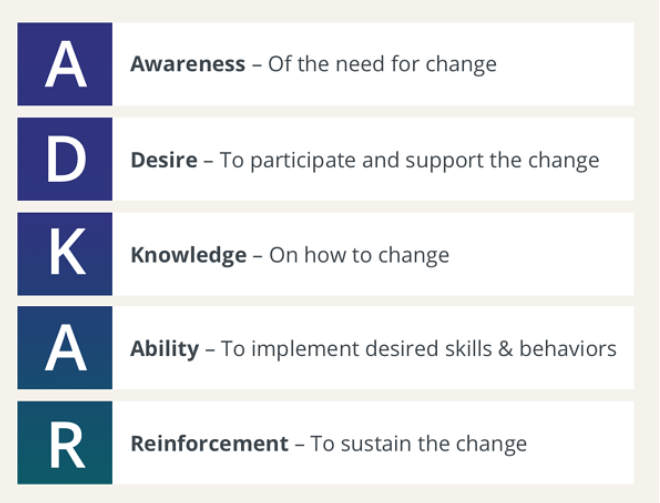
Applying Change Management stage 5: Reinforcement
In this blog series we will discuss how ADKAR, the model for individual change, can help you to engage others in implementing better change management in your change projects.
It is a natural tendency to revert back to what we know. In fact, there is research emerging about how the brain functions that suggests it is not just a natural tendency but a physiological tendency. While making a change is difficult, sustaining a change can be even more difficult. This is why reinforcement is such a critical component of successful change. It encompasses the mechanisms and approaches so that the new way stays in place.
Successful reinforcement may require:
- Celebrations
- Rewards and recognition
- Feedback
- Corrective actions
- Visible performance measurement
- Accountability mechanisms
Tactics for Fostering Reinforcement
- Publicly visible performance scoreboards that positively show compliance to a new process
- Feedback from supervisors directly to employees, including saying ”Thank you”
- Visible recognition by senior level sponsors
- Project-sponsored celebrations for employees
- Compensation and appraisal systems designed to support the change
Most organizations make a significant investment in helping people build the awareness, desire, knowledge, and ability to make a change successfully. But without understanding and proactively planning to reinforce a change after it has happened, you run the risk of that investment being wasted and the expected results from the change not fully being realized.
Reinforcement is the final building block of the Prosci ADKAR® Model, a simple but effective model for individual change made up of five building blocks of change:

Reinforcement to keep change management in place
Changes in large organizations can be temporary if employees revert back to the old way of doing things. If you’ve identified change management as important to ensuring effective changes in your organization, you cannot risk reverting to the old ways of doing things.
Questions people ask at the Reinforcement stage:
”What happens when we are successful?”
”What is the reward?”
”Will there be smaller rewards along the way to encourage us?”
Some key talking points and actions around Reinforcement include:
- Engage senior leaders. Active and visible sponsorship for applying change management will have a significant impact on how often it is applied. Leaders must endorse change management as an integral part of all future projects. They also must hold project teams accountable for applying change management on their projects.
- Monitor progress and create measurement systems. As with any other change you expect employees to adopt, there must be a way to gauge success. This may include status meetings, surveys, and metrics. Create schedules and stick to them. Show your results.
- Align incentives. Be sure your incentives line up with project goals, so you drive the behaviors you want for the change itself and your change team.
- Celebrate successes. Identifying and celebrating successes is important because it reinforces the commitment to applying change management. It also keeps morale high and can create additional momentum.